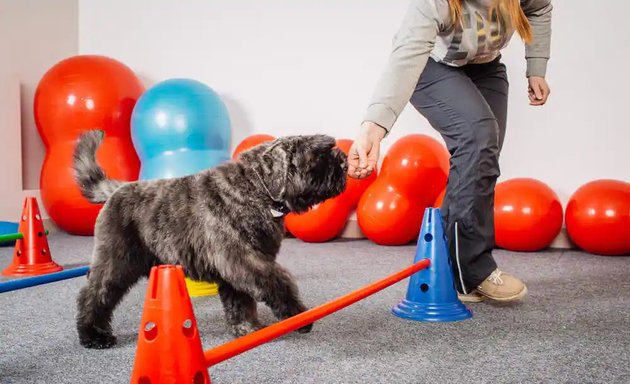Should you send your cherished pup to a training school? It’s a confounding dilemma for most of us and for a good reason. A boarding-and-train facility can work for some dogs. Such facilities are often touted as practical tools for resolving problematic behavior, promoting good manners in dogs, and even for training some to become service dogs or protection dogs. Are they worth the investment? What’s the catch?
If you have board and train options with your dog in mind, you need to do your homework to understand various dynamics that can affect training outcomes for you and your dog.
After all, you can’t expect that simply sending your dog away for training is all it takes for your pup to learn new rules. Here’s a short checklist you can pore over before opting to send your pup away for training.
- Costs Involved
If you consider sending your dog away for training, note that you might end up paying through the nose. Organizations offering board-and-train services for your tail-wager can charge top dollar. These costs can add up, leading to a financial surprise when the dog boarding facility invoices you. Find out the costs involved from the onset before investing in the process.
- Uncertainty
Can you confidently entrust your dog to a stranger? Let me put it more clearly: would you hand your child over to someone you’ve chanced upon online? Mmh… I doubt it.
Dogs are valued members of our families, and only an owner can best understand their pups’ needs, how to cater for them and when to do so. These needs include exercise, food, grooming, supplies, among others.
You can’t be sure that your pup will receive humane treatment from others besides you and your other family members. Only you can provide the attention and care your dog deserves without holding back.
- Experience
Expansive dog-training facilities may call upon the services of temporary employees to handle an influx of ‘trainees.’ If your dog is left in the hands of a part-timer, new or inexperienced employees, they may not get treated as well as you would expect.
Take a proactive step to find out the trainer’s experience and credentials. This would ensure training objectives are realized if you opt to have your dog trained away from home.
- Living Environment
Let’s consider a scenario whereby your dog enjoys the perks of living in the home with the rest of your family. You would need to search for a training facility that creates an environment that mimics your home.
Can your dog grasp your house rules during obedience training if they spend the better part of their days in a kennel? Please find out how the facility treats your dog, especially their downtime.
After training, does your pup spend the rest of the day in a crate? If so, chances are they could be wearing a sad look and wondering in their minds what in the world you signed them up for. Well, you might end up with a depressed dog if the training facility doesn’t offer your dog opportunities to release their pent-up frustration.
- Post-training Behavioral Concerns
If a training school is overwhelmed with dogs needing training, they may opt for quick fixes by using training methods that deliver results in the shortest time possible. These include using shock collars as a form of aversive punishment to promote submission by instilling fear.
Unfortunately, taking such corners could set your dog up for behavioral issues later. Investigate the training methods used by the training facility. If the positive reward isn’t part of the training program, look elsewhere.
What Is the Alternative?
Board-and-train facilities aren’t for every dog. Some pups freak out in the presence of new faces- other dogs and strangers. Consider in-house or residential training classes for your furry friend to learn to be at ease around other dogs.
Private training may also be a viable alternative, but you need to consider the cost implications beforehand. Still, it’s best to deal with some problematic dog behaviors in an environment they are most comfortable- at home. Issues such as separation anxiety are best addressed if caring family members are around.
Training a dog takes time and effort. It’s not a responsibility you can delegate to someone else and expect meaningful long-term results.
Whether you go for board-and-train facilities or residential training, the results are only tenable if you get actively involved during and after training. Learning is always fluid- ongoing, and the only way to ensure our dogs don’t revert to their old habits is by repetitively practicing new rules and behavior.
Now, is it okay to send your pup away for training? I guess the jury is out. The ball is on your side now!
































